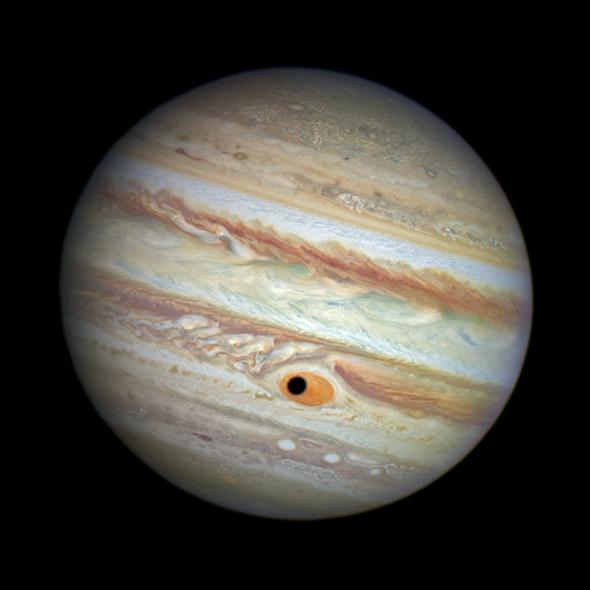If you go outside after sunset and look to the southwest right now, you’ll see Venus low in the sky. And above it, not too far away, is another bright object: Jupiter, the mightiest planet in the solar system.
It’s very pretty, but if you look with binoculars you’ll see it has moons. And with a small telescope you’ll see it’s a world: The disk of the planet becomes apparent, and you can even see some of the banded clouds circling it.
It’s a huge, complex, and completely fascinating place. So check out this week’s Crash Course Astronomy episode, all about Jupiter!
I hope somebody out there got my Airplane! references.
And yes, before you complain in the comments, I did in fact and indeed mean “centrifugal force.” If you have an issue with that, then I suggest you read this. You pays your money and you takes your frame of reference.
If you want to learn more about Jupiter losing its belt, I’ve written about that happening before, too. More than once. More than twice, even.
And if you like the Great Red Spot, try this, because wow.
